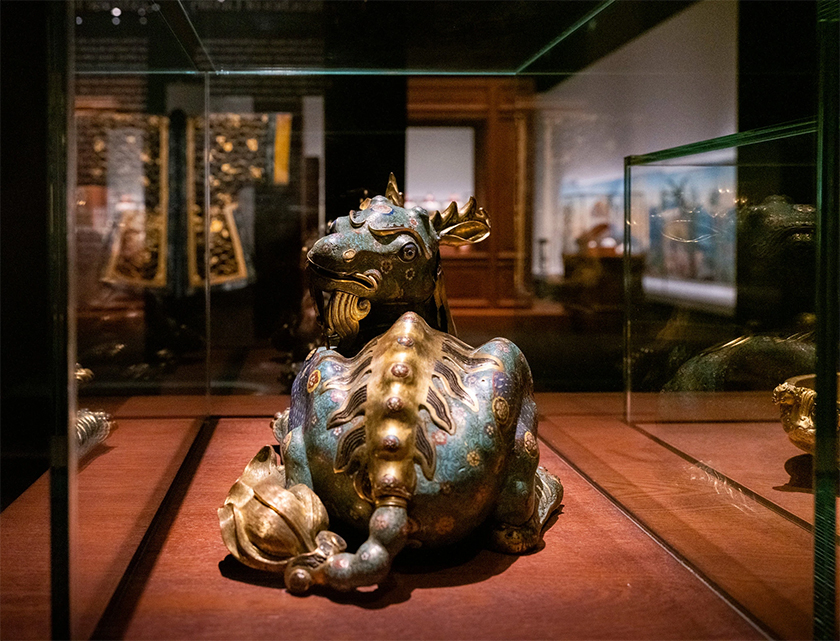
An enamel on copper qilin representation. A qilin is a hooved, mythical animal from Eastern Asia dating back to the 18th-century.
Image courtesy of: The New York Times, photographed by: Katarina Premfors
“10,000 Years of Luxury” is an exhibition at the Louvre Abu Dhabi that examines the meaning behind luxury through years and years of interpretations. Over the past 10,000 years, the definition behind “luxury” has changed and evolved… and confused!
The show was produced in partnership with the Musee des Arts Decoratifs in Paris and curated by Olivier Gabet, the museum’s director. With 350 objects on display, this show does an amazing job of featuring how individual societies view luxury.
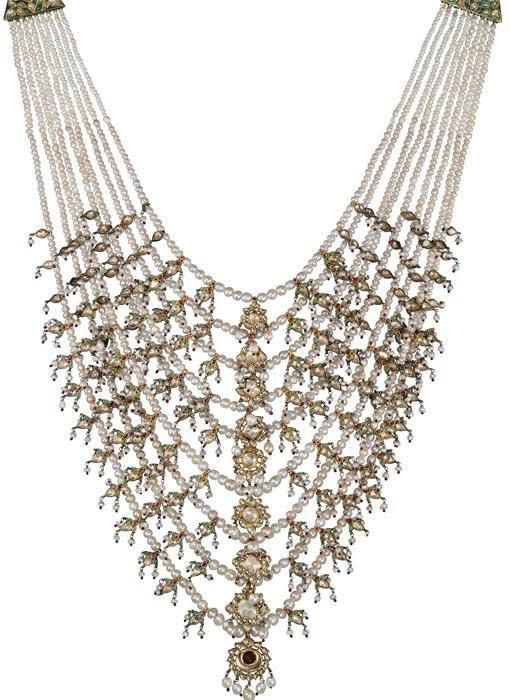
The 19th-century antique pearl necklace given to the late Egyptian singer Umm Kulthum by His Highness Shaikh Zayed Bin Sultan Al Nayhan. Coincidently, it sold for $1.2 million at Christie’s auction in 2008.
Image courtesy of: Gulf News
To be clear, there isn’t a single object that emerges as the one symbol of luxury. The exhibition begins with a recently discovered 8,000-year-old pearl whose origin suggests that it was treasured by the Neolithic people of Marawah. Thousands of years ago, this group was believed to engage in pearl trade with nearby civilizations. The pearl shows parallels between limited natural resources and the change that goes into luxury items when they move through talented hands.
In the same display case is a stunning necklace that belonged to Umm Kulthum, the late Arab diva. On loan from the collection of the Zayed National Museum, the contradiction between the “before and after” spanning 10,000 years is astounding.
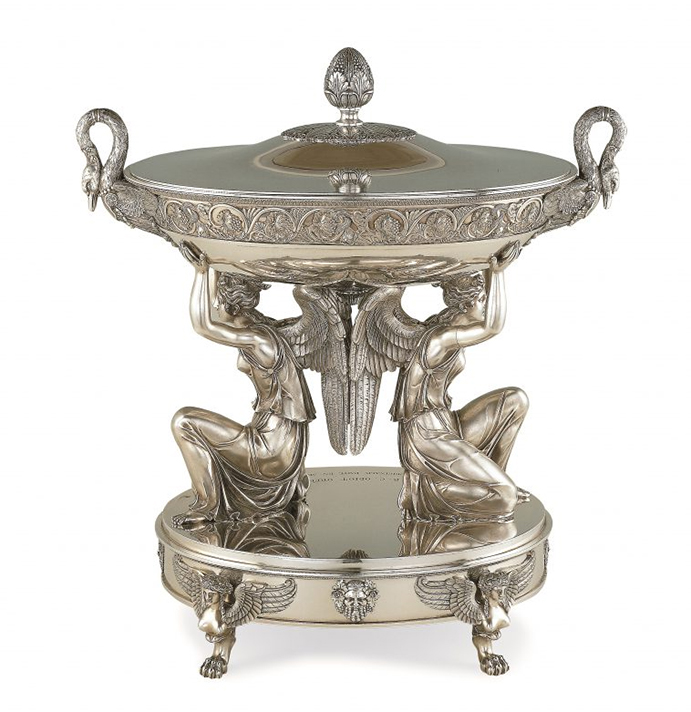
An 18th-century soup tureen silver from France.
Image courtesy of: The Style Mate
Most galleries are dark and one spotlight is set on the objects and the commentary showcased. In the section dedicated to the ancient world, there is a 2,000-year-old silver Boscoreale Treasure tableware found near Pompeii, earrings, and spice jars. These all illustrate how collecting objects (in jewel boxes and tombs) developed the early ideas around value.
There are many juxtapositions meant to invite the viewer to question his own ideas about luxury. For example, the ancient Roman Republic was adherent to frugality and Greek philosophers frequently questioned whether or not unnecessary objects lead to greed and vanity.
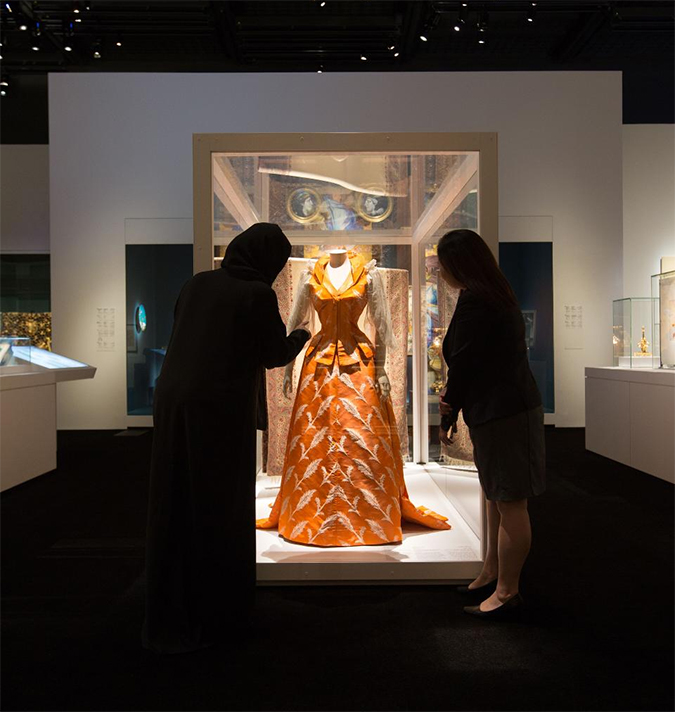
Created by the English-born, Paris-based designer Charles Frederick Worth, this 19th-century organza silk dress has white feathers. Worth is considered by many to be the “father of the modern haute couture business.”
Image courtesy of: Forbes, photographed by: Musthafa Aboobacker
A fascinating part of the show illustrates how the Industrial Revolution of the 19th-century changed perspectives via the rise of a new social class. The age of mass production brought contradictions… rarity was valued but branding was becoming influential. Rather than standing out from everyone else, luxury spending became associated with “fitting in.”
The largest hall, 15,000-square-foot of exhibition space, is saved for Paris as it is defined as the center for European luxury. The Paris World Fair in 1878 brought on the vision of master craftsmen notable to France. With couture gowns, designer shoes, and a 1920s Louis Vuitton steamer trunk, there is no denying that France has been the epicenter of luxury for many years.
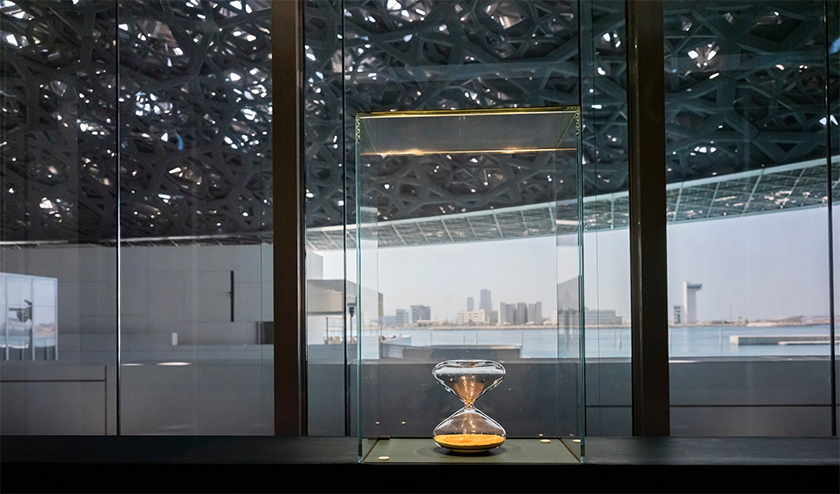
An hourglass closes the show… signifying, perhaps the fleeting nature of time itself.
Image courtesy of: The New York Times, photographed by: Katarina Premfors
The exhibition ends in a room that features a large hourglass. Designed by Marc Newson, the hourglass sits in front of a huge window overlooking the gleaming blue Arabian Sea. The meaning is obvious, throughout history time has been the one luxury that no one can capture or replicate. Maybe “10,000 Yeas of Luxury” wants us to step back, contemplate, and take a moment to truly appreciate life.
The exhibition’s curator, Olivier Gabet said, “At a time when we have explored virtually all means of material expression, definitions of luxury continue to evolve and mean many different things to different people. But for me, the common thread to be maintained around the idea is rarity.”